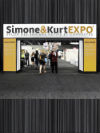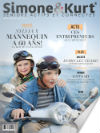In 1996 my boss on the newspaper in Rochester, NY, returned from a photojournalism convention where he’d been informed, « digital pictures is the long run. » So he went out and bought one, a state-of-the-art digital digicam, the Kodak NC2000e (« News Digital camera for the new millennium »). Starting life as a Nikon N90s, Kodak then turned it right into a digital digicam (ala Frankenstein). Since I was the computer geek on workers, he handed it to me and mentioned, « see what this can do. » The outcomes weren’t fairly. It recorded 1.3 megapixel photos (1280 x 1024 pixels!) on a removable laborious drive. There have been 4 ISO choices, 200, 400, 800 and 1600, but 800 was so noisy it was hardly usable. 1600 was good for laughs. With white steadiness, even if you were careful, images tended to have a magenta solid. The battery was inbuilt, so if it died whilst you had been out (an virtually every day incidence), you had to plug it right into a portable, however heavy, external battery. You bought all of that for the low, low value of simply $15,000. Oh, and there was no LCD for reviewing photos. Shoot and pray. Despite all that, it revolutionized newspaper images.
Cinematic mode made its debut on the iPhone 13 series and is principally Apple’s take on a Portrait mode for cara membuat video pendek. Whereas Cinematic mode is enjoyable to make use of, the results may be hit or miss. It’s harking back to when Apple introduced Portrait mode with the iPhone 7 Plus: Initially it worked however wasn’t great. Over several years, Apple improved Portrait mode to the point where it is actually fairly wonderful.
Cyanoacrylate (Super Glue) fuming (for porous or nonporous surfaces) The CSI pours Super Glue into a steel plate and heats it to about one hundred twenty F. He then locations the plate, the heat source and the thing containing the latent print in an airtight container. The fumes from the Super Glue make the latent print seen with out disturbing the material it’s on.
Intelligence analysts don’t make restrictive predictions on what’s going to happen in a specific combat state of affairs. Instead, they look at all available sources of knowledge — which might embody weather circumstances, intercepted enemy communications and information acquired from interrogations and interviews — place the knowledge into context and supply their commanders with a full scope of threats and potential programs of motion to help them make knowledgeable selections. Useful intelligence exploits enemy weaknesses using instantly accessible forces and may save lives [source: House].


